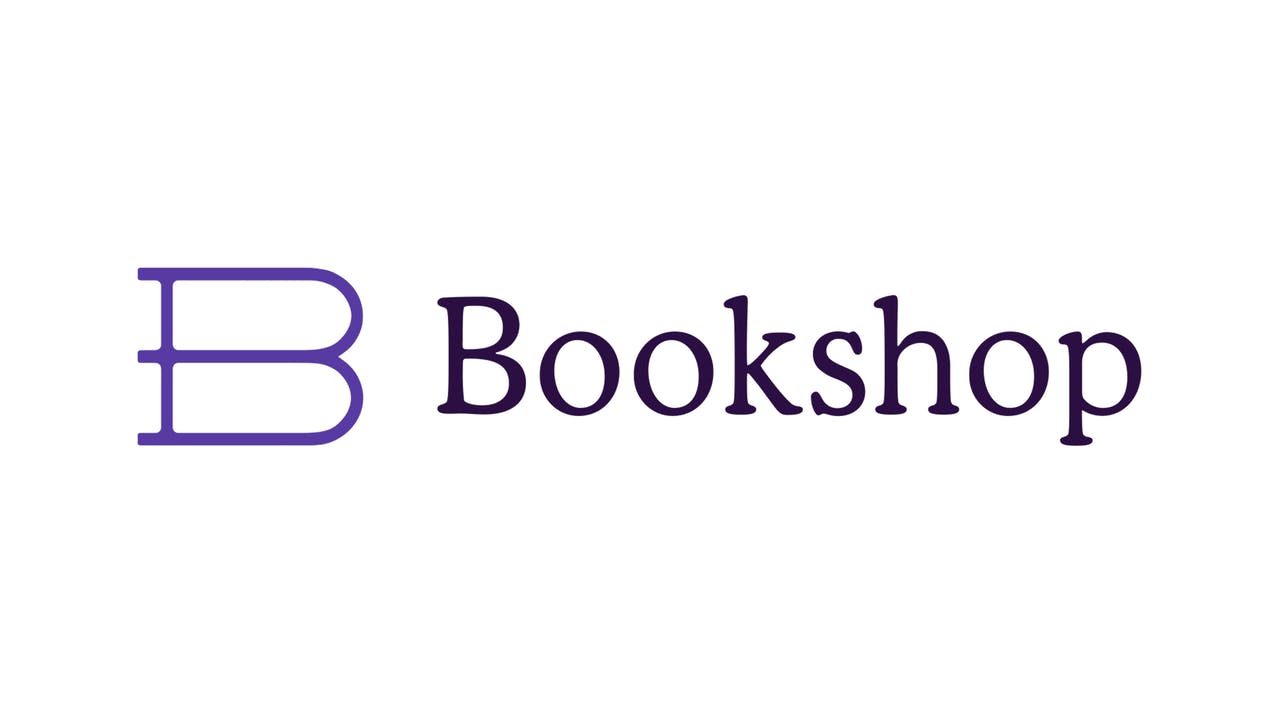Many popular novels about Renaissance women picture them in relation to powerful men. One need look no further than the steady stream of novels about the wives of Henry VIII, perpetuating a phenomenon that I have named the “Noah’s ark approach,” which positions women in dependent relation to famous men. Contemporary readers of historical fiction and biofiction (about actual historical figures) have missed out on an extraordinary array of women’s voices that were heard in their own period – both acclaimed and reviled – but then silenced over time and excluded from the canon of accepted classics.
More recently, however, there has been a steady increase in biofiction about women creators from earlier periods.
My own projected series, Shakespeare’s Sisters, comprises six interrelated historical novels that imagine the stories of early modern women authors from their own perspectives. These novels offer fictional engagements with an array of early modern figures, from queens to commoners. Historical women, including Mary Sidney Herbert, the protagonist of Imperfect Alchemist, are at the center of the narratives, bringing their voices and experiences to life for modern audiences.
Shakespeare’s Sisters centers on women whose lives and voices both shape and are shaped by women, many of whom appear in each other’s stories. Spanning generations and social classes, the series paints a multi-hued portrait of Renaissance England, seen through the lives of courtiers, commoners, poets, playwrights and, above all, indomitable women who broke the rules of their time while juggling many of the responsibilities and obstacles faced by women worldwide today. All the title characters and many others are based on actual people, while invented characters add breadth and depth to their stories.
Imperfect Alchemist, the opening novel in the series, is an imaginative reinvention of the remarkable life of Mary Sidney Herbert, Countess of Pembroke – friend of Queen Elizabeth, visionary scientist, advocate for women writers and scandalous lover of a much younger man. One of the earliest women authors in Renaissance England to publish under her own name, the Countess successfully forged a place for herself in a man’s world.
A member of one of England’s leading families, she carved out space for herself as a daring and often controversial figure in a royal court riven by jealousies and intrigues. Her pioneering
literary and scientific experiments challenged many of Renaissance England’s established conventions – one of the things that most strongly drew me to her.
As an influential literary patron as well as author, she convened a literary salon of writers whose membership included Edmund Spenser, John Donne, Ben Jonson and other authors interested in testing the limits of literary forms. Her own play about Antony and Cleopatra is believed to have influenced Shakespeare.
Responding to the Countess’s role as mentor to a cohort of women writers – including Mary Wroth, Aemilia Lanyer, Elizabeth Cary and Anne Clifford, all of whom will play lead roles in my Shakespeare’s Sisters series – I have imagined these women into her circle, their interaction with the male authors inspiring visions of new possibilities.
In Imperfect Alchemist, the fictional Mary Sidney Herbert is mediated through my knowledge of her real-life circumstances and her writings. She was also a scientist, practicing alchemy in her private laboratory to prepare chemical and herbal remedies. Although the Countess was a well- regarded alchemist, no manuscript records of her alchemical recipes or experiments survive. I have drawn on historical accounts documenting the detailed practices of other female alchemists of the period present an authentic, if conjectural, account of her scientific work.
As the acclaimed historical novelist Sarah Dunant observes, fashioning historical verisimilitude, “like a pointillist painting,” lies in the details. Indeed, Dunant describes historical details as “gold dust,” giving her readers confidence that they’re encountering worlds that actually existed, thus grounding the novel’s inventions in a “multicolored” world.
Pursuing a related line of thought, the historical novelist Emma Donoghue observes that what “biographical fiction does marvelously” is to include “the really peculiar detail, the detail that does not seem to fit – a kind of oddity that I might not have thought to make up,” which makes for “characters who are more rounded and three-dimensional than highly consistent invented ones often are.” In Imperfect Alchemist, such “peculiar” details include the Countess’s initiation into shooting firearms and smoking tobacco.
To lend a broader perspective than Mary’s point of view alone, I introduce an invented character, Rose Commin, her lady’s maid – a country girl who brings an entirely different outlook to their intersecting lives. Trained to serve and observe, Rose proves to be both a keen judge of character and a skilled artist whose drawings give new dimension to Mary’s own life and writings. The background for my construction of Rose is based on accounts of servants and country folk of the period. Fear of witchcraft was common, and that strand in the story incorporates historical examples of the treatment of women accused of sorcery.
The supporting cast of characters, both real and invented, add three-dimensionality to the fictional storyline. Apart from Rose’s family, the Pembroke servants and a few others, most of the characters in the book are fictional renditions of real historical figures whose roles combine elements of their actual lives with my own inventions.
Along with the authors in the literary circle and the courtiers in Mary’s life, they include the court painter Marcus Gheeraerts the Younger; the physician, naturalist and poet Thomas Moffett; the Countess’s alchemist associate Adrian Gilbert; the proto-feminist Marie de Gournay; and John Dee, the most prominent occultist of his time and astrologer to the Queen.
Two central figures in the story are also drawn from life. Simon Forman, who plays a key role in Rose Commin’s life, was an astrologer and herbalist who was apprenticed in his youth to a cloth merchant named Commin. Matthew Lister served the Dowager Countess of Pembroke as family physician and was rumored to be her lover.
Once I embarked on the first draft of the novel, I had to guard against my tendency, as a scholar, to plunge down historical or literary “rabbit-holes,” enticed by fascinating details that would interrupt the writing process and might obscure rather than illuminate the story – supplying dust rather than gold dust. The most valuable advice I received came from Jennifer Carrell, a novelist and scholar in her own right, who reminded me that “as a novelist, your responsibility is to the story, not to history. Just tell the story that matters!”
Sometimes, of course, the challenge for me as a novelist is to recognize that the story that matters to the wider public might not be the one that captures my attention as a scholar or a teacher. Some of what thrills me as a scholar/teacher – such as Mary Sidney Herbert’s ingenuity in employing 126 distinct stanzaic forms in her creative paraphrases of 107 Psalms, which influenced the poetry of John Donne and George Herbert – might not grip the general reader.
So what is the story that matters in Imperfect Alchemist? Most of the novel is written from two alternating points of view: Mary’s, in the third person, and Rose’s, in the first person. As I was writing, the story that came to matter the most was about both of these women, driven by sometimes conflicting imperatives of creative expression and desire – one a quiet artist, the other an outspoken author – who come to connect across class lines, learning truths from each other that they never expected to discover about themselves and their world.
One of my guiding principles has been to avoid contradicting historical facts, but I have sometimes adjusted the timing of actual events by a couple months or years, in order to serve the story and the narrative flow.
Behind this novel there is another story that matters. That’s the story of the draft of a novel that I wrote about Mary Sidney’s niece, Mary Wroth, before turning to Imperfect Alchemist.
Beginning that novel, which I am now revising for publication, was when I learned that if you really want to “change the subject” (the title of my first scholarly book on Wroth) there’s nothing like writing fiction about a subject on which you’ve become one of the “authorities,” because that’s when you will be forced to recognize, with abashed consternation, that all of your “expertise” can be as nothing – or even pose obstacles – to the story you’re trying to tell.
As a Wroth scholar and teacher, I was too knowledgeable about my subject to transition easily into fiction, too expert and too constrained by the invisible but inexorable rules of scholarship: don’t make assumptions and never make an assertion you can’t back up with evidence. But as a novelist, I realized that was precisely my job – to enter freely into the world of imaginative possibility, to listen to my characters, to employ evidence lightly as gold dust rather than heavily as blocks of marble.
I wasn’t building a temple to my subject, but seeding a garden with new life, watering, weeding, and welcoming whatever might arise, while maintaining the responsibility to my story to determine whether or not it belonged there and to what use it might be put.
I slowly learned to adapt the scholarly techniques that have served me throughout my career for this new purpose – not to draw connections between text and context, but to create a world in which my fictionalized protagonist could live and breathe, labor and love. To create the form and texture of the time, I read historical studies documenting early modern clothes and food, source texts containing early modern recipes and medical remedies, collections of letters and diary entries by other early modern women.
Most important, I returned to the primary texts that had started me on this journey in the first place: the words and works of Mary Wroth, just as I later turned to the actual Mary Sidney Herbert to fashion my imperfect alchemist.
I read Mary Wroth’s prose romance, Urania, in its original 1621 edition at Harvard’s Houghton Library for rare books and manuscripts, then traveled to the Newberry Library in Chicago to read the unpublished, handwritten manuscript continuation of the Urania,. because no modern edition existed at that time. Reading those pages in Wroth’s own hand, written almost four hundred years earlier, I understood Keats’s words on first looking into Chapman’s Homer: “Then felt I like some watcher of the skies / When a new planet swims into his ken.” Except that instead of a male poet reading a male translator of a male classical author, I was a feminist scholar reading an early modern woman author whose words filled me with excitement. I recognized, beyond a doubt, that here was no minor writer whose claim to fame rested solely on the anomaly of her gender as a writer, but an astounding and unique voice for her time – a new planet indeed.
By that point, I had come to identify what I call the “Noah’s Ark approach” to the study of women authors – linking an otherwise “minor” woman with a recognized patriarch in order to legitimate the female half of the pair. For Mary Sidney, sister to the renowned poet and military hero Sir Philip Sidney, and Mary Wroth, niece to the same Philip Sidney, their patriarchal pedigrees provided readymade legitimacy on the margins of the canon. My own PhD dissertation, pairing Wroth’s Urania with Sidney’s Arcadia, was a case in point, a surrender to the Noah’s Ark approach.
My first two scholarly books, however, focused squarely on Wroth as an author in her own right. Reading Mary Wroth (co-edited with Gary Waller) gathered cutting-edge essays, while Changing the Subject was the first book of interpretive scholarship wholly focused on Wroth, situating all her works in relation to the stunning range of early modern women authors that I was still learning to recognize and appreciate.
But I was learning that “changing the subject” – from at best one-half of a male-dominated dyad to a primary subject in her own right – was only the first step in a longer journey.
A decade later, as a recognized scholar of early modern women’s studies, I could wait no longer to launch my project of bringing this exceptional woman author to the attention of a larger public, through fiction. I found the journey even more rewarding – and challenging – than I had anticipated. I wrote with greater intensity, and with greater joy, than I had ever experienced as an author before.
And underlying it all was the same sense of wonder that had precipitated my earliest work on Wroth – glimpsing that new planet. I realized that writing the novel was another way of focusing the telescope that I had been training on that planet since setting down my very first words about Wroth in graduate school.
When in doubt about what “my” characters might say to one another, I listened to Wroth’s characters in her Urania. Thus I heard one of them advise another to stop lamenting her male lover’s inconstancy, and instead pursue her own path: “Follow that, and be the Empress of the World, commanding the Empire of your own mind.”
Powerful words – indeed, subject-changing. Hardly typical of what women authors, let alone male authors, were writing in the early 1600s. And accessible nowhere other than in the words themselves.
The celebrated novelist Hilary Mantel maintains that “you become a novelist so you can tell the truth,” and observes that “most historical fiction is … in dialogue with the past.” My driving aim is to “tell the truth” that becomes visible in these historical women’s writings, and to put my own fiction into dialogue with theirs.
Emma Donoghue observes that in her own biofiction, she has no obligation “to make the story stolidly representative of everybody’s life,” but instead can focus on “the oddballs – peculiar individuals who do not seem to fit.” Indeed, Donoghue finds that “at its best – the biographical novel makes people uncomfortable,” because these characters “stay different from us.… We should keep that uncomfortable difference … which should provoke us.”
To my mind, it is precisely that uncomfortable difference that provoked early modern audiences to outrage when confronted with the published words of women authors who refused to play by the rules – the difference that can provoke modern audiences to wonder that such words could be spoken at that time.
There is a scene in Imperfect Alchemist where Mary Sidney Herbert invites her young niece, Mary Wroth, to read aloud from one of her own love sonnets, after the circle of male authors has been shaken by Aemilia Lanyer’s radical verses:
Following Aemilia’s example, Mary stood straight and tall during the Countess’s introduction. Her red hair, sharing the family hue, was even curlier than her aunt’s, and a few tendrils escaped their binding to tremble beside her cheeks. Seated close to the young woman, Mary glimpsed a sheen of sweat across her forehead. The sheet of paper in her goddaughter’s hand trembled slightly, but when she opened her mouth, her voice was strong and clear.
The poem she offered captured the anguish of disappointed love:
False hope, which feeds but to destroy and spill What it first breeds; unnatural to the birth
Of thine own womb; conceiving but to kill.
A love sonnet crafted around miscarriage! No male sonneteer would even think to convey the pain of love through one of women’s most common experiences of death. The Countess saw several of the men shift uneasily, and marveled to find greater discomfort on some faces than Aemilia’s more explicitly radical verse had produced. For them, the love sonnet was a familiar and reliable form – but not in this voice. Men were supposed to be the lovers, women the objects. Male sonneteers weren’t concerned with women’s experiences in love, only with their own successes or failures.
She saw Ben Jonson, his eyes alight, fixed intensely on her niece. But William was looking at his knees. As the hoped-for future leader of the Circle, could her son appreciate the language of a battered heart? Value the courage of a voice writing through loss, no matter man or woman?
Writing my novel about Mary Sidney Herbert was a voyage of discovery back to my novel about Mary Sidney Wroth, which I have now set about revising, following the publication of Imperfect Alchemist. I discovered that bringing the voices of these two women authors together was one of the stories that matter – not just to me, but to both novels and to the Shakespeare’s Sisters series itself.
Imperfect Alchemist extends biofiction’s traditional focus on a historical figure, supplemented by the other historical figures whose paths they cross, by widening the lens. Not only does my narrative focus on the stories of two different women, one historical and one invented, but the story builds upon a recurring image: the double ouroboros, an alchemical figure of two snakes biting each other’s tails in a circle, which celebrates the joining of opposites or the partnering of complementary forces. As the cover design for the novel suggests, with its background of plants and berries surrounding the ouroboros, Imperfect Alchemist explores the intertwining strands of herbalism and alchemy that run through the narrative and connect its two major characters.
My aim has been to tell a story that imagines the perspectives of historical women in a world that encompasses both known facts and imagined possibilities, illuminating the historical record without being limited by it. I like to think that the real Mary Sidney Herbert, who reinterpreted the Psalms with her brother Philip, resurrected his Arcadia, and reinvented the figure of Cleopatra in her Antonius, would appreciate my transmutation of her own story.
References
Margaret Hannay, Philip’s Phoenix: Mary Sidney, Countess of Pembroke. Oxford Univ. Press, 1990.
———, Mary Sidney, Lady Wroth. Ashgate, 2010.
Michael Lackey and Emma Donoghue, “Emma Donoghue: Voicing the Nobodies in the Biographical Novel.” Éire-Ireland, Spring/Summer 2018.
Hilary Mantel, “The Day is for the Living.” BBC Reith Lecture One, 13 June 2007. https://www.bbc.co.uk/programmes/b08tcbrp
Naomi J. Miller and Gary Waller, eds, Reading Mary Wroth: Representing Alternatives in Early Modern England. Univ. of Tennessee Press, 1991.
Naomi J. Miller, Changing the Subject: Mary Wroth and Figurations of Gender in Early Modern England. Univ. Press of Kentucky, 1996.
———. “Reimagining Mary Wroth through Fiction.” The Sidney Journal, 32:2 (2014).
———. “Reimagining the Subject: Traveling from Scholarship to Fiction with Mary Wroth.” In Re-Reading Mary Wroth, ed. Katherine R. Larson and Naomi J. Miller with Andrew Strycharski. Palgrave Macmillan, 2015.
———. and Katharine R. Larson, eds. Re-Reading Mary Wroth. Palgrave Macmillan, 2015.
———. “Fictionalizing Shakespeare’s Sisters: Mary Sidney Herbert.” Early Modern Women: An Interdisciplinary Journal, 12:2, 2018.
———. “Imagining Shakespeare’s Sisters: Fictionalizing Mary Sidney Herbert and Mary Sidney Wroth.” In Authorizing Early Modern European Women: From Biography to Biofiction, ed. James Fitzmaurice, Naomi J. Miller and Sara Jayne Steen. Amsterdam Univ. Press, forthcoming 2021. [“Imagining Mary” is adapted from this longer article.]
———. Imperfect Alchemist: A Novel of Mary Sidney Herbert, Renaissance Pioneer. Allison & Busby, 2020 [https://naomimillerbooks.com/]
Meredith Ray, “A Conversation with Sarah Dunant.” ITALICA, 90:4, 2013.
Mary Wroth, The Countesse of Mountgomeries Urania, ed. Josephine A. Roberts, vol. 10 of The Early Modern Englishwoman: A Facsimile Library of Essential Works. Scolar Press/Ashgate, 1996.
———, The Second Part of The Countess of Montgomery’s Urania, ed. Josephine A. Roberts, completed by Suzanne Gossett and Janel M





